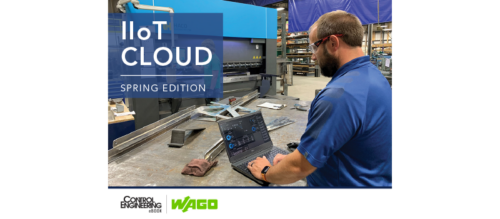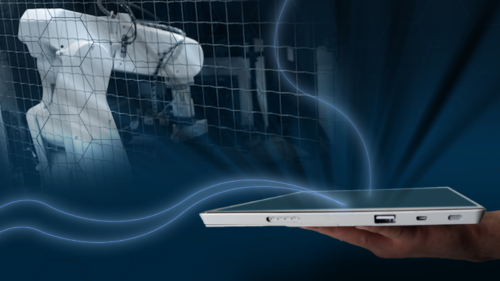Manufacturers may find wisdom in Wal-Mart retail supply chain strategies
Perhaps manufacturers would want to consider a best-in-market supply chain approach rather than best in class, to better meet customers' needs. Gary Maxwell, senior vice president of international supply chain for Wal-Mart Stores Inc., said a best-in-market approach requires...
| Also read: Operation Green blog entry: Walmart’s bigger challenge a meaningful index |
Chicago – What can Wal-Mart teach manufacturing about global supply chains? Perhaps manufacturers would want to consider a best-in-market supply chain approach rather than best in class, to better meet customers’ needs.
|
Gary Maxwell, senior vice president of international supply chain for Wal-Mart Stores Inc.
|
Gary Maxwell, senior vice president of international supply chain for Wal-Mart Stores Inc., said a best-in-market approach requires thinking like a customer; complying with local and international laws, regulations, and customs; matching the maturity curve to the market; setting high expectations for low costs; and operating in a sustainable way. To better serve customers, best-in-market supply chain management trumps world class supply chains every time, he said.
|
————————————— Bottom up versus top down A former Wal-Mart chairman now owns the Kansas City Royals. Players with the team purchased a 140-mph tennis ball serving machine, in a self-help effort to improve hitting. They started at 95 mph and cranked it up from there, finding that most could hit the tennis balls even at the 140 mph top speed. To further challenge themselves, they numbered balls 1-9, then tried to hit only the even numbers, reading the numbers coming at them at 140 mph. And a few players could even manage that with some success. Had management arrived with a mandate to hit even numbered tennis balls at 140 mph, players might have laughed and walked away. But because players bought the machine and progressively set higher goals for themselves, they improved significantly. |
|
———————— Origins of advice |
Maxwell delivered the advice in the CSCMP Annual Global Conference 2009 keynote presentation on Sept. 21, offering guidance to attendees of the Council of Supply Chain Management Professionals meeting; 42 countries are represented at the gathering, CSCMP said.
Adaptive growth, respectfully
Wal-Mart, just shy of $100 billion in revenue last year, does business in 15 countries, with more than 7,900 stores, 228 distribution centers, in 10 formats (types of stores), using 53 banners (store names), Maxwell said. Diversity is wide. These include tiny 1,000 square foot Costa Rican convenience stores, 200,000 square foot U.S. super stores, Japanese Seiyu four-level premium quality grocery/department stores, and ASDA Living, U.K. general merchandise stores that expanded from a grocery chain acquired 10 years ago.
Through such expansions, respect for individuals remains, Maxwell says, with emphasis on customer service and continuous improvement. There was some question initially if the Wal-Mart culture would work in other countries, he admitted, but everywhere "people need love and respect. When they get respect, they can do extraordinary things." Adding sustainability-doing what’s right by the environment-has been a natural extension of original company principles, Maxwell said.
When Wal-Mart grows by acquisitions, management of the acquired company often expresses excitement about the idea of Wal-Mart building stronger supply chains around their businesses, Maxwell explained.
Customer-focused structure
Starting with the customer ensures development of systems that won’t create an uncompetitive cost structure. The business needs to serve the customers’ needs, education, customs, and tastes. It’s wrong to start with the backend and discuss technology or automation first, he warned. Instead:
– Ask what customers expect, what are their experiences, and where do you want to take them? Ensure all laws and customers are followed, without bribes.
– Assess market maturity. Identify if the market is emerging (India-great education but a challenging infrastructure), high-growth (Brazil), focused on asset-utilization (U.S., with concern for return on investment), or working on redefinition (Japan, which goes beyond third-party supply chain relationships into fourth and fifth parties);
– Learn customer expectations;
– Develop leaders within the organization, ensuring appropriate infrastructure, land, and labor costs;
– Look at asset allocations based on risks, laws, and regulations. For example, countries with regulations that count the number of times workers can put their hands over their heads per day might be a strong candidate for automation;
– Design facilities to match customer cost expectations, with options to upgrade later.
|
Wal-Mart has many faces in other countries. This is a store in Japan.
|
A small warehouse with rack and forklift might be best in class for many places in India. In Japan, $2 peaches, individually wrapped, two per clamshell package, refrigerated, meet local expectations. Wal-Mart’s Misato, Japan, distribution center, has four floors (land costs are very expensive and labor equal to or greater than in the U.S.). It uses many technologies including conveying, automated sorting, and radio frequency identification (RFID).
Automation needs to match what customers can support. Big hairy audacious goals are good, Maxwell said, crediting the recent business book. Many Wal-Mart goals, however audacious, are set from the bottom up. Doing so improves participants’ abilities to meet and exceed expectations, Maxwell suggested.
|
Wal-Mart Gary Maxwell says supply chain optimization often is overlooked.
|
Implementation strategies
Maxwell spoke in favor of what he called the productivity loop: Lower costs, then lower prices, sell more units, increase profits, and repeat. Wal-Mart is working on accelerating the number times it exercises that loop.
Inventory optimization often is overlooked, Maxwell said. In a pyramid design, inventory policies are on top, achieved with collaboration and integration.
Below that are forecasting and event planning.
The pyramid base is made of supply chain fundamentals, such as lead times, performance metrics, and order constraints.
Often supply chain implementations begin with an internal sales effort. Educating organizations about the power of supply chain management is part of what practitioners need to do, Maxwell said, to ensure capital for upgrades when they’re needed. "You need to market the concepts within your organizations."
Project examples
Among Wal-Mart projects:
– Hydrogen-fuel-cell-powered fork lifts are being tested;
– Double yogurt-container lids (foil and plastic) are being replaced with just one (foil);
– Redesigned cardboard packaging of 277 Wal-Mart brand toys used 727 fewer shipping containers last Christmas from China to the U.S., saving equivalent of 5,100+ trees, 1,300 bbl oil, and $3.5 million in transportation costs;
– A product rating index may give consumers an idea of how "green" an item is; and
– Consumers may be able to check online to see product origins.
Also read from MBT:
– Supply chain management tips: Align business strategies, apply advanced technologies ;
More from the CSCMP meeting:
– JDA Software offers new managed logistics services ; and
– Intel: How to create a lower-cost supply chain in 7 steps .
– Mark T. Hoske, electronic products editor, MBT www.mbtmag.com
Do you have experience and expertise with the topics mentioned in this content? You should consider contributing to our CFE Media editorial team and getting the recognition you and your company deserve. Click here to start this process.






